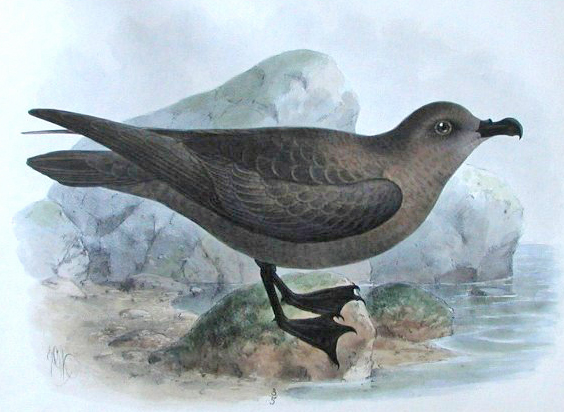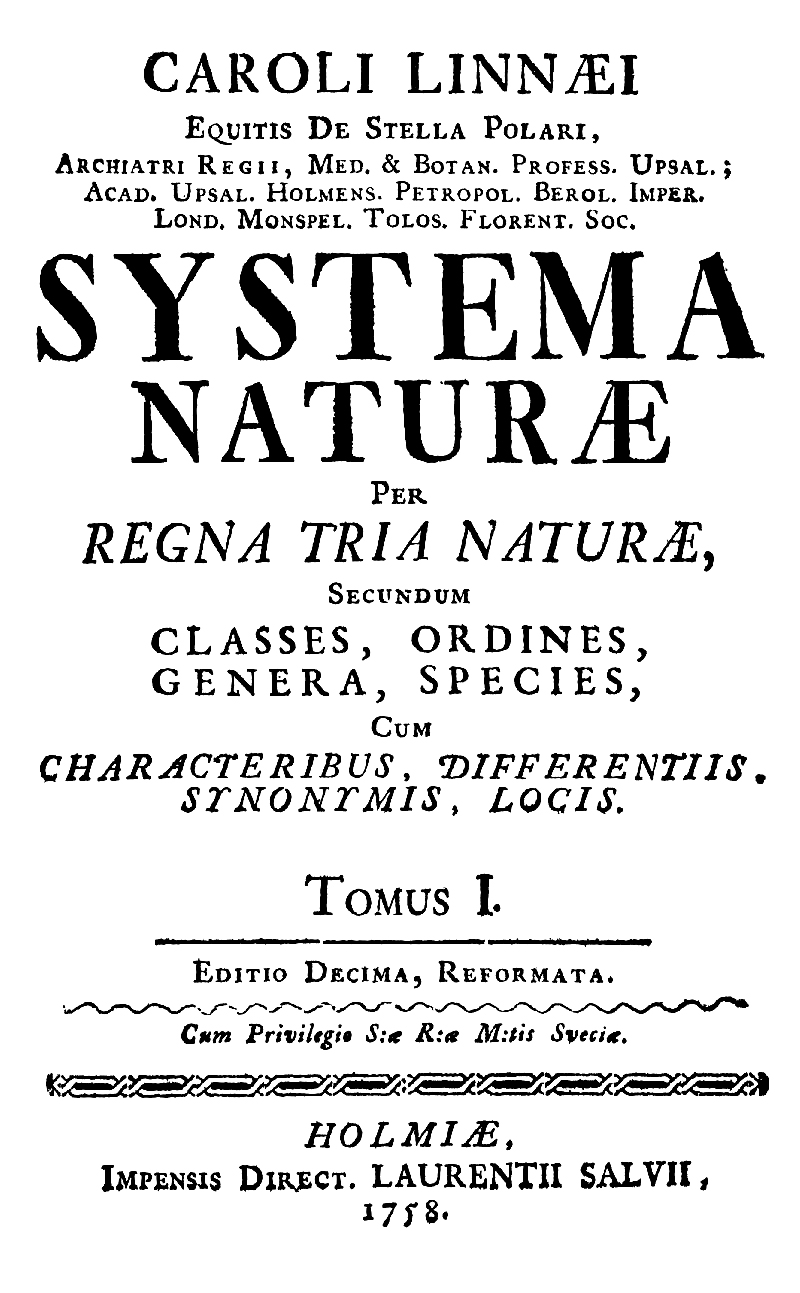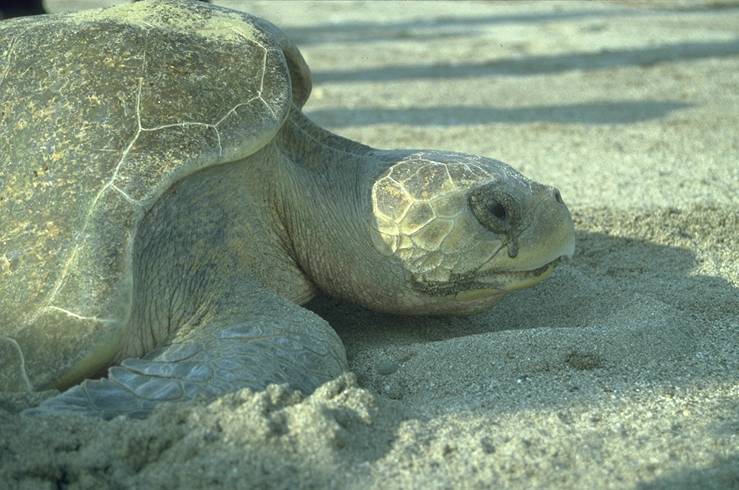|
Fulmar
The fulmars are tubenosed seabirds of the family Procellariidae. The family consists of two extant species and two extinct fossil species from the Miocene. Fulmars superficially resemble gulls, but are readily distinguished by their flight on stiff wings, and their tube noses. They breed on cliffs, laying one or rarely two eggs on a ledge of bare rock or on a grassy cliff. Outside the breeding season, they are pelagic, feeding on fish, squid and shrimp in the open ocean. They are long-lived for birds, living for up to 40 years. Historically, the northern fulmar lived on the Isle of St Kilda, where it was extensively hunted. The species has expanded its breeding range southwards to the coasts of England and northern France. Taxonomy The genus ''Fulmarus'' was introduced in 1826 by the English naturalist James Stephens. The name comes from the Old Norse ''Fúlmár'' meaning "foul-mew" or "foul-gull" because of the birds' habit of ejecting a foul-smelling oil. The type spe ... [...More Info...] [...Related Items...] OR: [Wikipedia] [Google] [Baidu] |
Fulmar Antarctique - Fulmarus Glacialoides
The fulmars are tubenosed seabirds of the family Procellariidae. The family consists of two extant species and two extinct fossil species from the Miocene. Fulmars superficially resemble gulls, but are readily distinguished by their flight on stiff wings, and their tube noses. They breed on cliffs, laying one or rarely two eggs on a ledge of bare rock or on a grassy cliff. Outside the breeding season, they are pelagic, feeding on fish, squid and shrimp in the open ocean. They are long-lived for birds, living for up to 40 years. Historically, the northern fulmar lived on the Isle of St Kilda, where it was extensively hunted. The species has expanded its breeding range southwards to the coasts of England and northern France. Taxonomy The genus ''Fulmarus'' was introduced in 1826 by the English naturalist James Stephens. The name comes from the Old Norse ''Fúlmár'' meaning "foul-mew" or "foul-gull" because of the birds' habit of ejecting a foul-smelling oil. The type speci ... [...More Info...] [...Related Items...] OR: [Wikipedia] [Google] [Baidu] |
Northern Fulmar (Fulmarus Glacialis) (W1CDR0001409 BD2)
The northern fulmar (''Fulmarus glacialis''), fulmar, or Arctic fulmar is a highly abundant seabird found primarily in subarctic regions of the North Atlantic and North Pacific oceans. There has been one confirmed sighting in the Southern Hemisphere, with a single bird seen south of New Zealand. Fulmars come in one of two color morphs: a light one, with white head and body and gray wings and tail, and a dark one, which is uniformly gray. Though similar in appearance to gulls, fulmars are in fact members of the family Procellariidae, which include petrels and shearwaters. The northern fulmar and its sister species, the southern fulmar (), are the extant members of the genus . The fulmars are in turn a member of the order Procellariiformes, and they all share certain identifying features. First, they have nasal passages that attach to the upper bill called naricorns; however, nostrils on albatrosses are on the sides of the bill, as opposed to the rest of the order, including ... [...More Info...] [...Related Items...] OR: [Wikipedia] [Google] [Baidu] |
Northern Fulmar
The northern fulmar (''Fulmarus glacialis''), fulmar, or Arctic fulmar is a highly abundant seabird found primarily in subarctic regions of the North Atlantic and North Pacific oceans. There has been one confirmed sighting in the Southern Hemisphere, with a single bird seen south of New Zealand. Fulmars come in one of two color morphs: a light one, with white head and body and gray wings and tail, and a dark one, which is uniformly gray. Though similar in appearance to gulls, fulmars are in fact members of the family Procellariidae, which include petrels and shearwaters. The northern fulmar and its sister species, the southern fulmar (), are the extant members of the genus . The fulmars are in turn a member of the order Procellariiformes, and they all share certain identifying features. First, they have nasal passages that attach to the upper bill called naricorns; however, nostrils on albatrosses are on the sides of the bill, as opposed to the rest of the order, includ ... [...More Info...] [...Related Items...] OR: [Wikipedia] [Google] [Baidu] |
Southern Fulmar
The southern fulmar (''Fulmarus glacialoides'') is a seabird of the Southern Hemisphere. Along with the northern fulmar, ''F. glacialis'', it belongs to the fulmar genus ''Fulmarus'' in the family Procellariidae, the true petrels. It is also known as the Antarctic fulmar or silver-grey fulmar. It is largely pale grey above and white below with a distinctive white patch on the wing. It breeds on the coast of Antarctica and on surrounding islands, moving north in winter. It nests in colonies on cliffs, laying a single egg on a ledge or crevice. Its diet includes krill, fish and squid picked from the water's surface. Taxonomy The southern fulmar formally described and illustrated in 1840 by the Scottish zoologist Andrew Smith in his major work ''Illustrations of the Zoology of South Africa''. He placed it with all the other petrels in the genus '' Procellaria'' and coined the binomial name ''Procellaria glacialoides''. The southern fulmar is now placed with the northern fulma ... [...More Info...] [...Related Items...] OR: [Wikipedia] [Google] [Baidu] |
Procellariiformes
Procellariiformes is an order of seabirds that comprises four families: the albatrosses, the petrels and shearwaters, and two families of storm petrels. Formerly called Tubinares and still called tubenoses in English, procellariiforms are often referred to collectively as the petrels, a term that has been applied to all members of the order,Warham, J. (1996). ''The Behaviour, Population, Biology and Physiology of the Petrels''. London: Academic Press, or more commonly all the families except the albatrosses.Brooke, 2004. They are almost exclusively pelagic (feeding in the open ocean), and have a cosmopolitan distribution across the world's oceans, with the highest diversity being around New Zealand. Procellariiforms are colonial, mostly nesting on remote, predator-free islands. The larger species nest on the surface, while most smaller species nest in natural cavities and burrows. They exhibit strong philopatry, returning to their natal colony to breed and returning to th ... [...More Info...] [...Related Items...] OR: [Wikipedia] [Google] [Baidu] |
Procellariidae
The family Procellariidae is a group of seabirds that comprises the fulmarine petrels, the gadfly petrels, the diving petrels, the prions, and the shearwaters. This family is part of the bird order Procellariiformes (or tubenoses), which also includes the albatrosses and the storm petrels. The procellariids are the most numerous family of tubenoses, and the most diverse. They range in size from the giant petrels with a wingspan of around , that are almost as large as the albatrosses, to the diving petrels with a wingspan of around that are similar in size to the little auks or dovekies in the family Alcidae. Male and female birds are identical in appearance. The plumage color is generally dull, with blacks, whites, browns and grays. The birds feed on fish, squid and crustacea, with many also taking fisheries discards and carrion. Whilst agile swimmers and excellent in water, petrels have weak legs and can only shuffle on land, with the giant petrels of the genus Macronec ... [...More Info...] [...Related Items...] OR: [Wikipedia] [Google] [Baidu] |
Procellaridae
The family Procellariidae is a group of seabirds that comprises the fulmarine petrels, the gadfly petrels, the diving petrels, the prions, and the shearwaters. This family is part of the bird order Procellariiformes (or tubenoses), which also includes the albatrosses and the storm petrels. The procellariids are the most numerous family of tubenoses, and the most diverse. They range in size from the giant petrels with a wingspan of around , that are almost as large as the albatrosses, to the diving petrels with a wingspan of around that are similar in size to the little auks or dovekies in the family Alcidae. Male and female birds are identical in appearance. The plumage color is generally dull, with blacks, whites, browns and grays. The birds feed on fish, squid and crustacea, with many also taking fisheries discards and carrion. Whilst agile swimmers and excellent in water, petrels have weak legs and can only shuffle on land, with the giant petrels of the genus Macronectes be ... [...More Info...] [...Related Items...] OR: [Wikipedia] [Google] [Baidu] |
Isle Of St Kilda
St Kilda ( gd, Hiort) is an isolated archipelago situated west-northwest of North Uist in the North Atlantic Ocean. It contains the westernmost islands of the Outer Hebrides of Scotland. The largest island is Hirta, whose sea cliffs are the highest in the United Kingdom; three other islands ( Dùn, Soay and Boreray) were also used for grazing and seabird hunting. The islands are administratively a part of the Comhairle nan Eilean Siar local authority area. The origin of the name ''St Kilda'' is a matter of conjecture. The islands' human heritage includes numerous unique architectural features from the historic and prehistoric periods, although the earliest written records of island life date from the Late Middle Ages. The medieval village on Hirta was rebuilt in the 19th century, but illnesses brought by increased external contacts through tourism, and the upheaval of the First World War contributed to the island's evacuation in 1930. The story of St Kilda has attracted arti ... [...More Info...] [...Related Items...] OR: [Wikipedia] [Google] [Baidu] |
Family (biology)
Family ( la, familia, plural ') is one of the eight major hierarchical taxonomic ranks in Linnaean taxonomy. It is classified between order and genus. A family may be divided into subfamilies, which are intermediate ranks between the ranks of family and genus. The official family names are Latin in origin; however, popular names are often used: for example, walnut trees and hickory trees belong to the family Juglandaceae, but that family is commonly referred to as the "walnut family". What belongs to a family—or if a described family should be recognized at all—are proposed and determined by practicing taxonomists. There are no hard rules for describing or recognizing a family, but in plants, they can be characterized on the basis of both vegetative and reproductive features of plant species. Taxonomists often take different positions about descriptions, and there may be no broad consensus across the scientific community for some time. The publishing of new data and opi ... [...More Info...] [...Related Items...] OR: [Wikipedia] [Google] [Baidu] |
Order (biology)
Order ( la, ordo) is one of the eight major hierarchical taxonomic ranks in Linnaean taxonomy. It is classified between family and class. In biological classification, the order is a taxonomic rank used in the classification of organisms and recognized by the nomenclature codes. An immediately higher rank, superorder, is sometimes added directly above order, with suborder directly beneath order. An order can also be defined as a group of related families. What does and does not belong to each order is determined by a taxonomist, as is whether a particular order should be recognized at all. Often there is no exact agreement, with different taxonomists each taking a different position. There are no hard rules that a taxonomist needs to follow in describing or recognizing an order. Some taxa are accepted almost universally, while others are recognized only rarely. The name of an order is usually written with a capital letter. For some groups of organisms, their orders may follo ... [...More Info...] [...Related Items...] OR: [Wikipedia] [Google] [Baidu] |
Northern Fulmar Scotland RWD1
Northern may refer to the following: Geography * North, a point in direction * Northern Europe, the northern part or region of Europe * Northern Highland, a region of Wisconsin, United States * Northern Province, Sri Lanka * Northern Range, a range of hills in Trinidad Schools * Northern Collegiate Institute and Vocational School (NCIVS), a school in Sarnia, Canada * Northern Secondary School, Toronto, Canada * Northern Secondary School (Sturgeon Falls), Ontario, Canada * Northern University (other), various institutions * Northern Guilford High School, a public high school in Greensboro, North Carolina Companies * Arriva Rail North, a former train operating company in northern England * Northern Bank, commercial bank in Northern Ireland * Northern Foods, based in Leeds, England * Northern Pictures, an Australian-based television production company * Northern Rail, a former train operating company in northern England * Northern Railway of Canada, a defunct railway ... [...More Info...] [...Related Items...] OR: [Wikipedia] [Google] [Baidu] |
Salt Gland
The salt gland is an organ for excreting excess salts. It is found in the cartilaginous fishes subclass elasmobranchii (sharks, rays, and skates), seabirds, and some reptiles. Salt glands can be found in the rectum of sharks. Birds and reptiles have salt glands located in or on the skull, usually in the eyes, nose, or mouth. These glands are lobed containing many secretory tubules which radiate outward from the excretory canal at the center. Secretory tubules are lined with a single layer of epithelial cells. The diameter and length of these glands vary depending on the salt uptake of the species. Salt glands maintain salt balance and allow marine vertebrates to drink seawater. Active transport via sodium–potassium pump, found on the basolateral membrane, moves salt from the blood into the gland, where it is excreted as a concentrated solution. In birds The avian salt gland has two main ducts which are a medial and a lateral. Salt gland activations occurs from increa ... [...More Info...] [...Related Items...] OR: [Wikipedia] [Google] [Baidu] |


_on_water.jpg)




